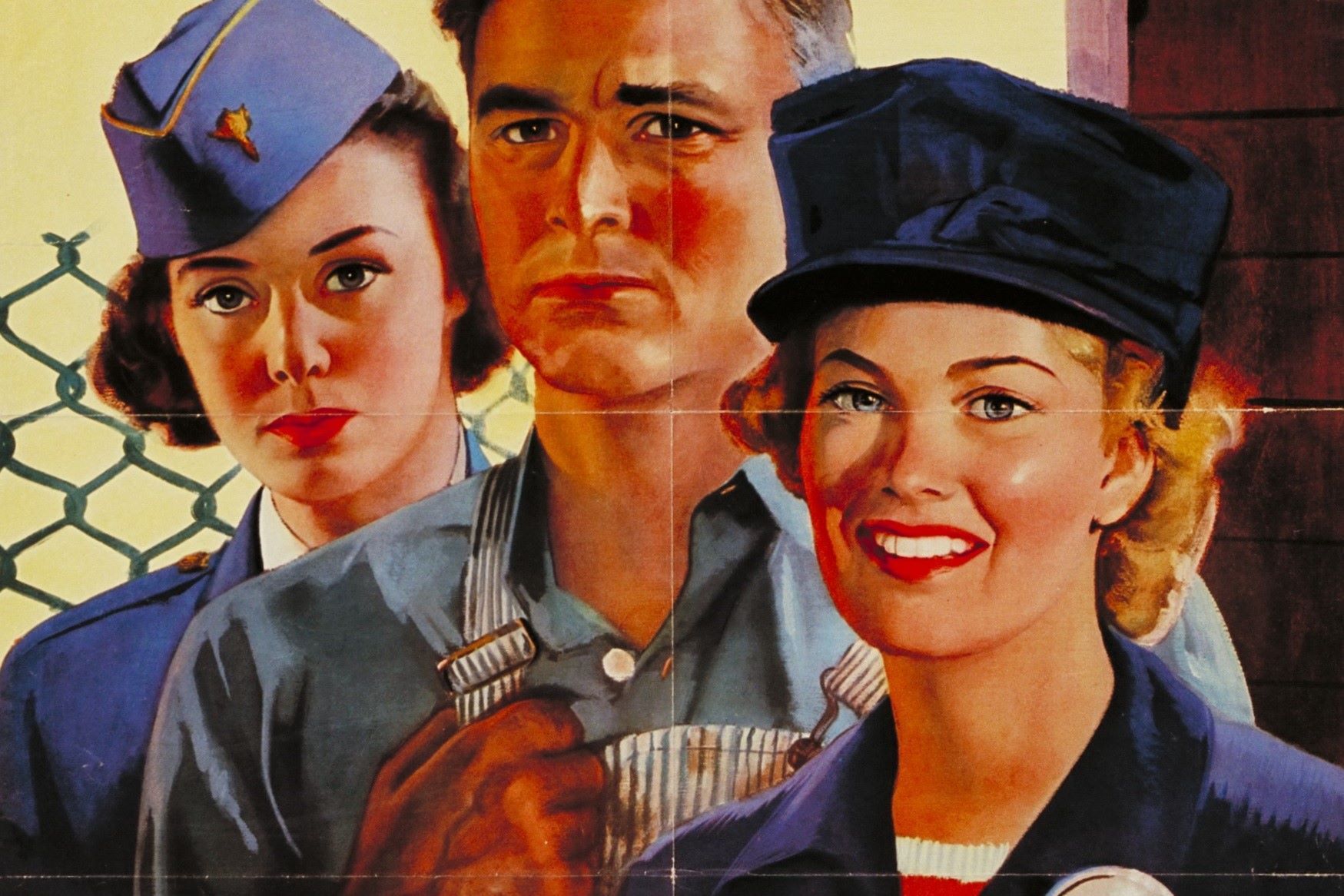
World War 2 propaganda posters played a crucial role in shaping public opinion and boosting morale during one of history's most turbulent times. These posters weren't just colorful images; they were powerful tools used by governments to communicate messages of unity, sacrifice, and patriotism. Why were these posters so effective? They combined striking visuals with simple, memorable slogans that resonated deeply with people. From urging citizens to conserve resources to encouraging enlistment in the armed forces, these posters covered a wide range of themes. Did you know that some of the most iconic posters, like "We Can Do It!" featuring Rosie the Riveter, have become cultural symbols? Let's dive into 35 fascinating facts about these influential pieces of history.
Key Takeaways:
- World War 2 propaganda posters were powerful tools that used emotion, symbolism, and bold imagery to shape public opinion, boost morale, and encourage participation in the war effort.
- These iconic posters had a lasting impact on society, influencing behavior, shaping perceptions, and fostering a sense of national unity. However, they also sparked controversies due to manipulation and stereotyping.
The Role of Propaganda in World War 2
Propaganda played a crucial role during World War 2. Governments used posters to influence public opinion, boost morale, and encourage participation in the war effort. These posters were powerful tools for communication and persuasion.
-
Posters were everywhere: From city streets to rural towns, propaganda posters were displayed in public spaces to reach as many people as possible.
-
Emotional appeal: Many posters used strong emotional imagery to evoke feelings of patriotism, fear, or anger.
-
Recruitment drives: Posters encouraged men to enlist in the military, often depicting soldiers as heroes.
-
Women's roles: Women were urged to join the workforce or volunteer, with posters highlighting their importance to the war effort.
-
Rationing and conservation: Posters promoted the conservation of resources like food, fuel, and materials.
-
Enemy demonization: Propaganda often portrayed the enemy in a negative light to unify the public against a common foe.
Iconic Propaganda Posters
Some propaganda posters became iconic symbols of the war. These posters are still recognized today for their powerful messages and striking visuals.
-
"We Can Do It!": This famous poster featured Rosie the Riveter, a symbol of female empowerment and contribution to the war effort.
-
"Loose Lips Sink Ships": This poster warned against careless talk that could give away military secrets.
-
"Keep Calm and Carry On": Originally intended to boost British morale, this poster has since become a popular cultural reference.
-
"Uncle Sam Wants You": Although originally from World War 1, this poster was reused to encourage enlistment during World War 2.
-
"Buy War Bonds": Posters urged citizens to financially support the war through the purchase of war bonds.
Techniques and Styles
Propaganda posters used various techniques and styles to convey their messages effectively. Artists employed different methods to capture attention and persuade viewers.
-
Bold colors: Bright, contrasting colors were used to grab attention and convey urgency.
-
Simplified imagery: Clear, simple images made the posters easy to understand at a glance.
-
Slogans: Catchy slogans helped reinforce the message and make it memorable.
-
Symbolism: Common symbols, like national flags or iconic figures, were used to evoke a sense of unity and patriotism.
-
Caricatures: Exaggerated depictions of enemy leaders or soldiers were used to ridicule and demonize the opposition.
Impact on Society
Propaganda posters had a significant impact on society during World War 2. They shaped public opinion and influenced behavior in various ways.
-
Boosting morale: Posters helped maintain public morale during difficult times by promoting a sense of purpose and resilience.
-
Encouraging participation: Citizens were motivated to contribute to the war effort through enlistment, volunteering, or conserving resources.
-
Shaping perceptions: The portrayal of enemies and allies influenced how people viewed the conflict and their role in it.
-
Promoting unity: Posters fostered a sense of national unity and collective effort.
-
Educating the public: Information about rationing, safety measures, and other wartime practices was disseminated through posters.
Propaganda Posters Around the World
Different countries produced their own unique propaganda posters, reflecting their cultural values and wartime goals.
-
United States: American posters often focused on recruitment, war bonds, and the contributions of women and minorities.
-
United Kingdom: British posters emphasized resilience, unity, and the importance of maintaining morale.
-
Soviet Union: Soviet posters highlighted the heroism of soldiers and workers, often using bold, dramatic imagery.
-
Germany: Nazi propaganda focused on promoting Aryan ideals and demonizing enemies, particularly Jews.
-
Japan: Japanese posters encouraged sacrifice and loyalty to the emperor, often depicting soldiers and citizens as honorable and brave.
The Legacy of World War 2 Propaganda Posters
The impact of World War 2 propaganda posters extends beyond the war itself. These posters have left a lasting legacy in art, culture, and history.
-
Artistic influence: The bold, graphic style of propaganda posters has influenced modern graphic design and advertising.
-
Historical significance: These posters provide valuable insights into the social and political climate of the time.
-
Cultural icons: Some posters, like "We Can Do It!" and "Keep Calm and Carry On," have become enduring cultural symbols.
-
Educational tools: Propaganda posters are used in educational settings to teach about World War 2 and the power of visual communication.
-
Collectibles: Original World War 2 posters are sought after by collectors and history enthusiasts.
Controversies and Criticisms
While propaganda posters were effective, they were not without controversy. Some aspects of their use and content have been criticized.
-
Manipulation: Critics argue that propaganda posters manipulated public opinion and exploited emotions.
-
Stereotyping: Many posters relied on stereotypes and caricatures, which can be seen as offensive or harmful.
-
Censorship: Governments controlled the content of propaganda posters, limiting freedom of expression.
-
Ethical concerns: The use of fear and hatred in some posters raises ethical questions about the methods used to achieve wartime goals.
The Lasting Impact of WWII Propaganda Posters
World War 2 propaganda posters played a crucial role in shaping public opinion and boosting morale. These posters weren't just art; they were powerful tools for communication. They rallied citizens to support the war effort, conserve resources, and stay vigilant against enemy threats. The bold imagery and compelling messages left a lasting impression on those who lived through the era.
Even today, these posters serve as historical artifacts, reminding us of the power of visual communication. They offer insights into the values, fears, and hopes of a generation facing unprecedented challenges. By studying these posters, we gain a deeper understanding of the social and political climate of the time.
In short, WWII propaganda posters were more than just wartime tools; they were symbols of unity, resilience, and the human spirit's capacity to endure and overcome adversity.
Frequently Asked Questions
Was this page helpful?
Our commitment to delivering trustworthy and engaging content is at the heart of what we do. Each fact on our site is contributed by real users like you, bringing a wealth of diverse insights and information. To ensure the highest standards of accuracy and reliability, our dedicated editors meticulously review each submission. This process guarantees that the facts we share are not only fascinating but also credible. Trust in our commitment to quality and authenticity as you explore and learn with us.


